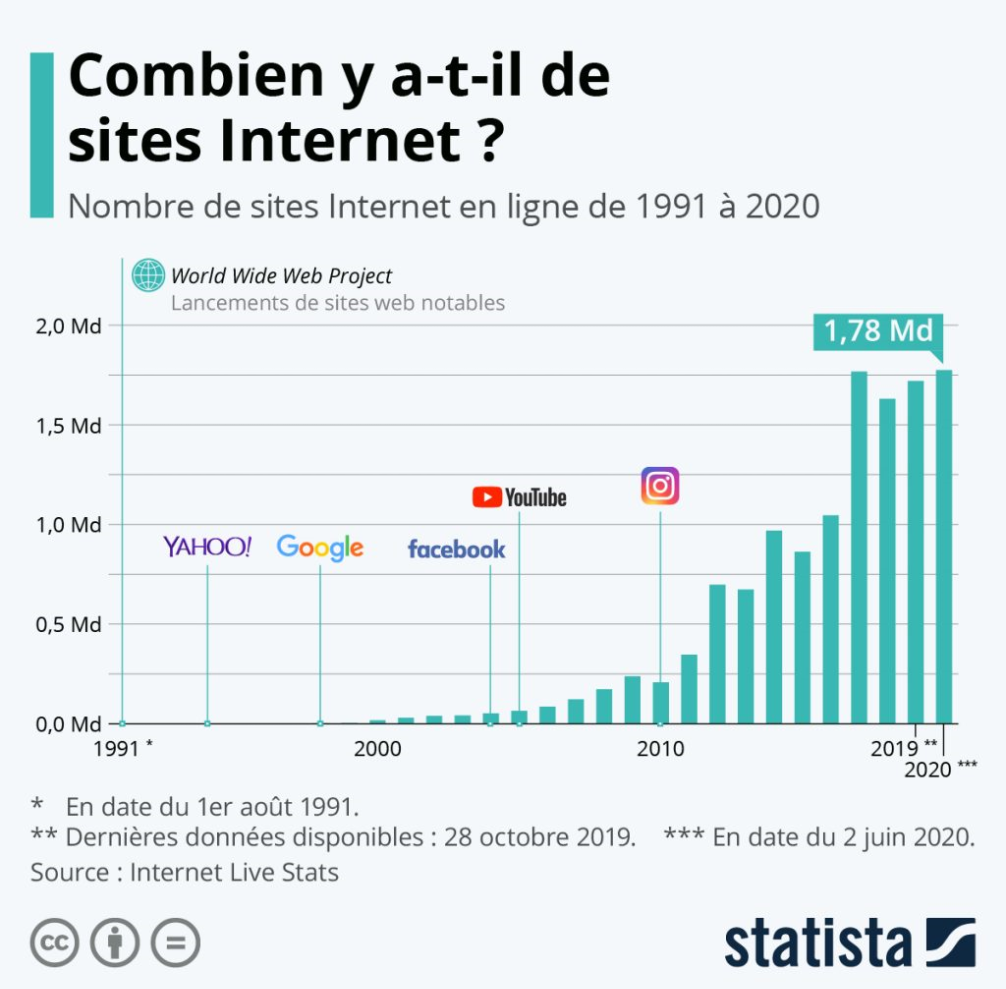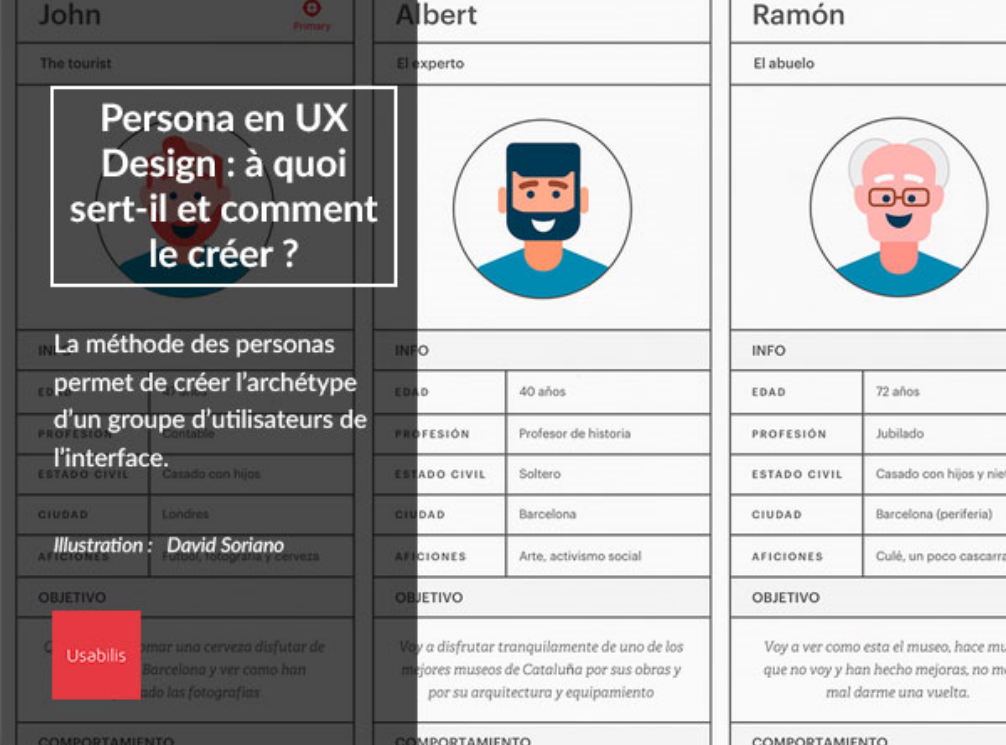Gone are the days when simply having a website gave us a privileged access to our customers. Those who had their own website could present their products and reach their targets without too many problems. Things have obviously changed, with 3 websites being created every second and over 1.85 billion websites worldwide. This means that we need to find a way to stand out from the crowd in order to reach our customers, and the best way to do this is to understand who they are by creating Buyer personas.

Source https://www.usabilis.com/persona-ux-design/
What is a persona?
A persona is a portrait of your actual customer. In a perfect world, it would be based on market research and data extracted from your existing customers. By clearly establishing your company’s persona(s), you make it easier to create your entire marketing strategy, allowing for a better allocation of time and resources to optimize your revenues.
The easiest way to do this is to build a profile of all your personas to ensure that you know them well. Do it as if you were creating a profile on a dating site. Give them a name, a picture and tell their story. It’s like introducing the characters of a novel. This way, you’ll have them in mind when you develop your marketing strategies for your products. You will be able to design a relevant strategy for each persona that will capture attention and translate into sales.
The goal is not to “profile” your customers, but rather to identify favorable profiles for your products.

Source https://www.usabilis.com/persona-ux-design/
How do you create a persona?
Creating personas is done by establishing 3 types of data. You have to go much deeper than just basic demographics, it’s when you dig a little more that you find that a product can have multiple personas. For many business owners, this exercise has allowed them to discover the underlying motivations of their customers and adapt the content to be more personalized.

For many business owners, building personas uncovered the underlying motivations of their customers and allowed them to tailor their content to be more personalized.Here are the data types you need to establish:
1. Demographics
This is where we find quantitative data. It may amaze you to see how much useful information can be gathered from your CRM, Google Analytics, Google Search Console, etc. We are obviously talking about information such as:
- Age
- Gender
- Spoken Languages
- Education
- Marital status
- Home town or city
- Work location
- Employment, Industry
- Etc.
2. Identification of your customers’ objectives in relation to your product
It’s about understanding what drives them to buy: their buying behavior, their issues relating to your product. It is only by having a good understanding of their needs that you will be able to understand their motivations in relation to your product.
3. Identification of your clients’ general challenges
Here we find qualitative data. You need to understand their motivations, both professional and personal. It’s only by really knowing what motivates your customers in their own lives that you can develop content that will be a hit.It is by knowing your personas precisely that you will be able to improve your marketing tools by determining for each of them:
- the unique and striking graphic design
- the right message to deliver
- the time of delivery
- the medium of delivery
At last, you will be able to serve your customers by focusing on their reality and getting effective results. For example, the Smart Adaptation allows your website to recognize its visitors and instantly adapt its content.

Having your personas in mind allows you to improve your digital marketing tools.
Having a hard time establishing your personas?
Not knowing your personas and the motivations behind their buying behavior can be a costly mistake for a company. You really need to focus on establishing and updating real personas, not to be confused with ideal or preferred personas.

Not knowing your personas and the motivations behind their buying behavior can be a costly mistake.
So, start by determining your non-personas, that is, the groups you definitely don’t have, or want, as customers. It is often easier to set up what you don’t have, often the information can be collected quickly.
Gather your team for a one-hour meeting. But remember! Make sure it’s not just the marketing team. You should include your sales team and customer service team as well, since they are constantly interacting with your qualified and unqualified prospects. They are a valuable source of information.
Lead off the meeting by asking each person to identify the customers that are contacting them and ending up not purchasing. Write each point on a pink Post-it note and stick it on the wall. You’d be surprised what can be said in 15 minutes. Then, for each pink Post-it note, ask for the equivalent statement that would indicate that the customer is an actual customer and write it on a yellow Post-it note. At the end of the meeting, you can discard the pink Post-its and collect the yellow Post-its to begin creating your personas.
Alternatively, you can bring in outside help to determine your personas. Our team of strategists specializes in the creation of personas and can conduct a meeting with your team to determine yours. Don’t hesitate to contact us to schedule a meeting.

Your personas should be at the heart of your digital marketing and the basis of all your communication elements.
Remember, personas are not just documents or profiles posted on the wall of every office in your marketing department. They are the heart of your digital marketing and should be the basis of all your communication elements.



